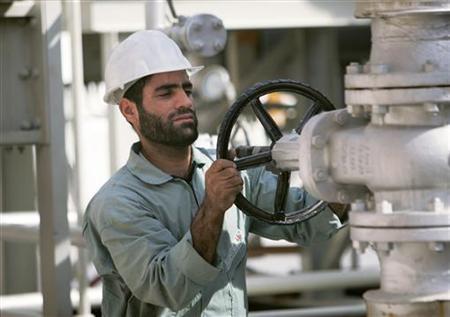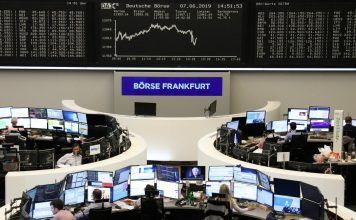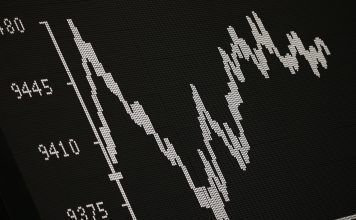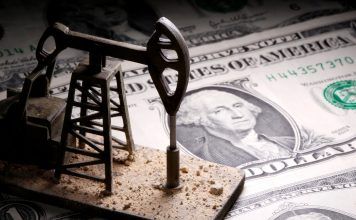As the devastation of climate change makes the need to decarbonise clearer by the day, countries face the question of what to do with their old fossil fuel infrastructure. While some environmental activists have taken to sabotaging the carbon economy on the back of its emissions in the Global North, the picture is different in oil-producing countries of the Global South, where energy infrastructure has fed communities for decades. There, the emphasis is placed on memory and institutionalisation.
The cases of Malaysia and Iran, where oil has significantly contributed to economic growth, give us a glimpse into how authorities are currently reckoning with their fossil fuel heritage. In the 20th century, the arrival of international oil companies in the major port cities on the Persian Gulf in Iran and the South China Sea in Malaysia transformed the built environment, accelerated urbanisation and impacted peoples’ everyday lives. Even today, the dynamics and actors of oil in Iran and Malaysia continue to reshape industry, society, culture, and politics while leaving their mark on the built environment and urban spaces.
Founded in 1978, the International Committee for the Conservation of the Industrial Heritage (TICCIH) is an international organisation established to explore, protect, conserve and explain the remains of industrialisation. In 2020, it published the first global assessment of the heritage of petroleum production, the oil industry and the places, structures, sites, and landscapes that might be chosen to conserve for their historical, technical, social, or architectural attributes. In a 2020 report, the organisation defined the heritage of the petroleum industry as
“the most significant fixed, tangible evidence for the discovery, exploitation, production, and consumption of petroleum products and their impact on human and natural landscapes”.
Less than a decade ago, Iran’s Ministry of Petroleum began to consider establishing museums with a view to preserving the country’s industrial heritage. Those in the port city of Adaban in the country’s southwest, include an old refinery, gas station, and the oldest oil-related technical training school. In sections of the old ports, passersby can appreciate cranes and heavy machinery, such as the Akwan and Sulfur cranes, as well as an exhibition about the reconstruction of the refineries following the Iran-Iraq war (1980-1988).
The country is projecting to open other oil museums in major oil port cities. One of them is Masjed Suleiman, a city in the southwestern province of Khuzestan widely recognised as the birthplace of the oil industry in the Middle East. Its museum hosts the oldest oil recovery site in the region. In Tehran, the Museum of Oil Industry Technology will detail the nature and importance of oil, gas, and petrochemicals since 1901. It was in that year that the British speculator William D’Arcy received a concession to explore and develop southern Iran’s oil resources.
In Malaysia, the oil industry is omnipresent in everyday life, which raises challenges to global decarbonisation efforts. The national oil company Petronas is visible everywhere, from the dissemination of scholarships, the establishment of a university, and the iconic Petronas Twin Towers to the transformation of sleepy towns into sprawling industrial complexes. The industry goes back to the early 1900s, when oil was struck in the jungles of Miri, Sarawak, under British rule.
The conservation of Malaysia’s oil legacy has proven somewhat challenging, as most rigs are located offshore and sites still very much in use. Efforts have also been limited and lack a centralised plan. In a federal nation, each state dictates its own policies, which extends to museums. Under the Sarawak Tourism Board, the oil rig in Miri has been transformed into a museum and tourist site but remains the only one of its kind.
Conservation efforts have mainly focused on education with an emphasis on science and technology. Most attractions, such as the Petrosains Discovery Centre and the Petronas University of Technology, prioritise public awareness and learning. Malaysia’s national narrative is consistently upbeat – that the oil industry has improved society, transformed of remote villages, advanced educational opportunities, and led to dramatic changes in landscapes and cityscapes.
Malaysia and Iran have taken different approaches when preserving the oil industry as part of their tangible and intangible cultural heritage. Nonetheless, a common element of is to separate the oil industry from its imperial pasts by preserving historical sites and narrating them as part of the national narrative.
For Malaysia, Petronas and the oil industry is promoted as a success story, intertwining petrol and nationalism. The preservation of the Miri oil rig as a tourist site serves the dual purpose of an attempt to safeguard the historical value of the location and to integrate it as a part of Sarawak’s story.
However, rising concerns about climate change, the environment, and corporate responsibility are increasing pressure on oil companies to reduce their carbon footprint by supporting clean and renewable energy, but these efforts appear to lag behind companies such as British Petroleum, which has moved into electric charging and renewable energy. Furthermore, the Covid-19 pandemic caused consumer demand for oil to plummet, which will likely continue to depress Iranian and Malaysian exports for the months to come.
In the case of Iran, the Covid-19 crisis and the fluctuations in oil prices coincide with intensified sanctions by the United States against Iran, also known as the “maximum pressure campaign”. Despite its rich oil and gas resources, the country needs new technology investments and development plans to prepare for the post-fossil-fuel future. However, that will be hard to achieve without resolving US-Iran tensions and easing sanctions. To balance future economic growth with social development and environmental protection, Iran needs to invest more in plans for sustainable development and transition to less environmentally harmful energy sources.
Malaysia’s response acknowledges of the twin effects of Covid-19 and global warming: change in weather patterns and a decrease in demand for oil. Since the 2010s, there has been some movement in the energy sector to prepare for the post oil future. Over nearly a decade, Petronas has focused on solar power, wind energy and clean hydrogen, pledging to achieve net zero carbon emissions by 2050.
[More than 80,000 readers look to The Conversation France’s newsletter for expert insights into the world’s most pressing issues. Sign up now]
But it took until 2020 amid the Covid-19 crisis and growing international awareness over the climate emergency for momentum to pick up. In 2021, the Ministry of Energy and Natural Resources set targets to decarbonise the country by 45% by 2030. While these efforts have been applauded, some hindrances remain, such as financial constraints and a lack of engagement with nongovernmental organisations.
Given changing global attitudes toward the oil industry, the question arises how the industrial heritage of Malaysia and Iran can be envisioned. Will oil rigs become relics of human greed instead of human advancement? And how will the national narrative reconcile this new reality with the importance of oil in the countries’ decolonisation process?
For Malaysia, it’s a question that has already been asked regarding palm oil and deforestation. Environmental activists in the country and abroad have highlighted their negative impact, which resulted in poor publicity for the country. However, through government engagement with youth and activists, there has been some improvement with how palm oil is viewed especially with regards to sustainability efforts.
Oil heritage perhaps needs to walk a similar path, encouraging honest conversations between policymakers, NGOs, industry stakeholders and historical organisations. The Covid-19 pandemic has also provided vital lessons and introduced new practices emphasising corporate responsibility toward workers. Improved governmental cooperation has also shown that it is possible to work toward common goals, which can be expanded to issues such as heritage. If implemented appropriately, such approaches may spell a bright future for how we view oil as part of a national narrative.








